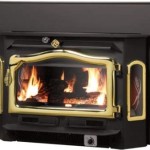Timber Mantels: Elevating Fireplace Design and Function
The fireplace mantle, often the focal point of a living space, offers a prime opportunity to inject character, warmth, and architectural detail into a home. Timber mantels, in particular, provide a timeless appeal, seamlessly blending rustic charm with modern design sensibilities. The inherent natural beauty of wood, coupled with its versatility in terms of style, size, and finish, makes timber mantels a preferred choice for homeowners and designers seeking to enhance the ambiance of their fireplaces.
Timber mantels are crafted from various wood species, each possessing distinct characteristics that influence their aesthetic and structural properties. The selection of the appropriate wood type is crucial for achieving the desired look and ensuring the longevity of the mantel. Common wood choices include oak, pine, walnut, maple, and reclaimed timbers. Oak, known for its durability and prominent grain pattern, is a popular choice for traditional settings. Pine, a softer wood, offers a lighter and more rustic appearance, often favored in country-style homes. Walnut, esteemed for its rich, dark color and smooth texture, lends a sophisticated touch to contemporary designs. Maple, with its fine grain and light tone, provides a clean and modern aesthetic. Reclaimed timbers, sourced from old barns, factories, and other structures, offer a unique history and character, making them ideal for creating a focal point with a story.
The installation of a timber mantel is a critical step, demanding careful planning and execution to ensure safety and stability. The weight of the mantel, the construction of the fireplace, and local building codes all play a role in determining the appropriate installation method. Professional installation is often recommended, particularly for heavier mantels or complex fireplace designs. Key considerations include the type of wall construction (brick, stone, drywall), the use of appropriate fasteners (lag bolts, screws, adhesives), and the provision of adequate clearance between the mantel and the firebox opening to prevent combustion. Additionally, the mantel's dimensions should be proportionate to the fireplace and the overall room size to create a visually balanced and harmonious design.
The Aesthetic Appeal of Timber Mantels
The primary draw of timber mantels lies in their ability to enhance the aesthetic appeal of a fireplace and, by extension, the entire room. The natural warmth and texture of wood create a welcoming and inviting atmosphere. The inherent variations in grain patterns, knots, and color variations ensure that each timber mantel is unique, adding a touch of individuality and character to the space.
Timber mantels can be customized to complement a wide range of interior design styles. A rough-hewn, reclaimed timber mantel evokes a rustic and rural aesthetic, while a smooth, polished hardwood mantel with clean lines conveys a more contemporary and refined look. The choice of finish, stain, or paint can further tailor the mantel's appearance to match the existing decor. Dark stains, for instance, can create a sense of formality and elegance, while lighter stains or natural finishes highlight the wood's natural beauty. Distressed finishes, often applied to reclaimed timbers, enhance the rustic character and add a touch of vintage charm.
Beyond their inherent beauty, timber mantels provide a versatile platform for decorative displays. They serve as an ideal surface for showcasing artwork, photographs, candles, and other decorative objects. The mantel's horizontal surface provides a focal point for seasonal decorations, such as garlands during the holidays or floral arrangements in the spring. The placement of these items can significantly impact the overall ambiance of the room, allowing homeowners to personalize their living spaces and reflect their individual tastes.
Functionality and Practical Considerations
Beyond their aesthetic appeal, timber mantels also offer practical functionality. They serve as a protective barrier, shielding the wall above the fireplace from heat and soot. This is particularly important for fireplaces that are frequently used, as excessive heat exposure can damage the wall surface over time. The mantel provides a physical barrier, deflecting heat away from the wall and preventing discoloration or cracking.
Timber mantels can also be incorporated into larger fireplace surrounds, providing a cohesive and visually appealing design. The surround, which encompasses the entire area around the fireplace opening, can be constructed from a variety of materials, including brick, stone, tile, or wood. Integrating a timber mantel into the surround creates a unified design that enhances the overall architectural appeal of the fireplace. The mantel serves as a visual anchor, balancing the vertical lines of the surround and providing a focal point for the entire structure.
The depth of the mantel is another important consideration. A deeper mantel provides more space for displaying decorative objects and also offers greater protection to the wall above. However, a mantel that is too deep can obstruct the view of the fire and create a cramped feeling in the room. The optimal mantel depth is determined by the size of the fireplace, the height of the ceiling, and the overall proportions of the room. Careful consideration of these factors ensures that the mantel is both functional and aesthetically pleasing.
Maintenance and Longevity of Timber Mantels
Proper maintenance is essential for preserving the beauty and longevity of timber mantels. Regular cleaning and occasional refinishing can help prevent damage from dust, soot, and moisture. The frequency of cleaning depends on the amount of use the fireplace receives and the surrounding environment. In general, it is recommended to dust the mantel regularly with a soft cloth or brush to remove loose particles.
For mantels exposed to heavy soot or smoke, a mild cleaning solution can be used. However, it is important to avoid harsh chemicals or abrasive cleaners, as these can damage the wood's finish. A solution of mild soap and water is typically sufficient for removing most stains and grime. After cleaning, the mantel should be thoroughly dried with a soft cloth to prevent water damage. Regular inspection of the mantel for cracks, splits, or warping is also important. Addressing these issues promptly can prevent them from escalating into more serious problems.
The type of finish applied to the timber mantel also affects its maintenance requirements. Varnished or lacquered finishes provide a protective layer that is resistant to moisture and stains. These finishes typically require less frequent maintenance than oiled or waxed finishes. However, they can be more difficult to repair if they become scratched or damaged. Oiled or waxed finishes enhance the natural beauty of the wood and allow it to breathe. These finishes require regular application of oil or wax to maintain their protective properties. The choice of finish depends on the desired aesthetic, the level of maintenance required, and the homeowner's personal preferences.
The location of the mantel within the room can also affect its longevity. Mantels exposed to direct sunlight or high humidity are more susceptible to damage. Sunlight can cause the wood to fade or discolor over time. High humidity can lead to warping or cracking. To mitigate these risks, it is important to protect the mantel from direct sunlight with curtains or blinds. Maintaining a stable humidity level in the room can also help prevent warping or cracking. Dehumidifiers or humidifiers can be used to regulate the humidity levels as needed. Implementing these preventative measures helps ensure that the timber mantel remains a beautiful and functional focal point for years to come.
Furthermore, the careful consideration of the fireplace's usage patterns is also beneficial. Excessive heat exposure can lead to drying and cracking of the timber. Reducing the frequency of intense fires, or installing a fireplace insert, might be considered to mitigate the potential for long-term damage. When burning wood, ensuring proper ventilation and using seasoned, dry wood can also significantly reduce soot buildup on the mantel and the surrounding area, simplifying the cleaning process and prolonging the life of the timber. Regularly sweeping the chimney is a good practice that further reduces the chance of excessive soot.

How To Select And Size Your Fireplace Mantel Water S Edge Woods Custom Wood

Collection Of Premium Wood Fireplace Mantels Dogberry

Wood Fireplace Mantels Reclaimed Barn

How To Select And Size Your Fireplace Mantel Water S Edge Woods Custom Wood

Custom Mantels Made In America Fireplace Xtrordinair

Why Wooden Fireplace Mantels Are Simply The Best

Timber Fireplace Mantels Traditional Wood Mantel Surrounds Mantelsdirect Com Decor Rustic Fireplaces

Rustic Wood Fireplace Mantels Log Mantles Best Of Nature
:max_bytes(150000):strip_icc()/ablossominglife-4151b41015a64193a437e981c3aad037.jpg?strip=all)
17 Diy Fireplace Mantel Plans
Timber Fireplace Mantels Architecture Design
Related Posts








